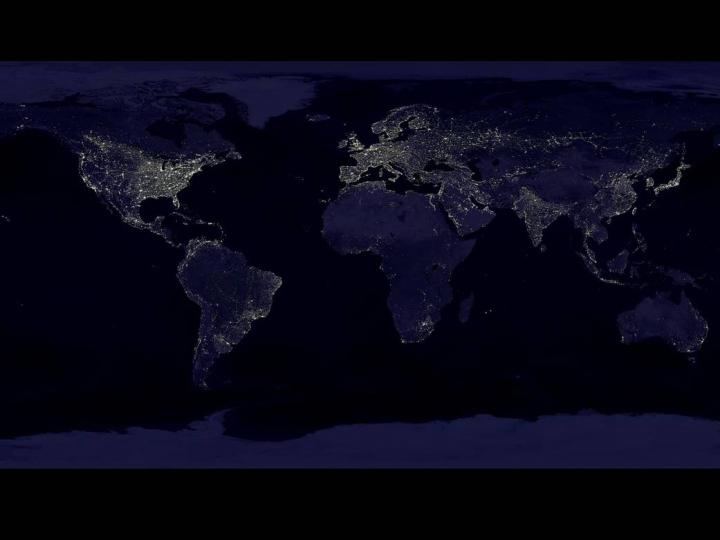Global night-time lights provide unfiltered data on human activities and socio-economic factors
March 29, 2017

Night-time lights seen from space correlate to everything from electricity consumption and CO2 emissions, to gross domestic product, population and poverty. (credit: NASA)
Researchers from the Harvard John A. Paulson School of Engineering and Applied Sciences (SEAS) and the Environmental Defense Fund (EDF) have developed an online tool that incorporates 21 years of night-time lights data to understand and compare changes in human activities in countries around the world.
The research is published in PLOS One.
The tool compares the brightness of a country’s night-time lights with the corresponding electricity consumption, GDP, population, poverty, and emissions of CO2, CH4, N2O, and F-gases since 1992, without relying on national statistics with often differing methodologies and motivations by those collecting them.
Consistent with previous research, the team found the highest correlations between night-time lights and GDP, electricity consumption, and CO2 emissions. Correlations with population, N2O, and CH4 emissions were still slightly less pronounced and, as expected, there was an inverse correlation between the brightness of lights and of poverty.
“This is the most comprehensive tool to date to look at the relationship between night-time lights and a series of socio-economic indicators,” said Gernot Wagner, a research associate at SEAS and coauthor of the paper.
The data source is the Defense Meteorological Satellite Program (DMSP) dataset, providing 21 years worth of night-time data. The researchers also use Google Earth Engine (GEE), a platform recently made available to researchers that allows them to explore more comprehensive global aggregate relationships at national scales between DMSP and a series of economic and environmental variables.
Abstract of Night-time lights: A global, long term look at links to socio-economic trends
We use a parallelized spatial analytics platform to process the twenty-one year totality of the longest-running time series of night-time lights data—the Defense Meteorological Satellite Program (DMSP) dataset—surpassing the narrower scope of prior studies to assess changes in area lit of countries globally. Doing so allows a retrospective look at the global, long-term relationships between night-time lights and a series of socio-economic indicators. We find the strongest correlations with electricity consumption, CO2 emissions, and GDP, followed by population, CH4 emissions, N2O emissions, poverty (inverse) and F-gas emissions. Relating area lit to electricity consumption shows that while a basic linear model provides a good statistical fit, regional and temporal trends are found to have a significant impact.